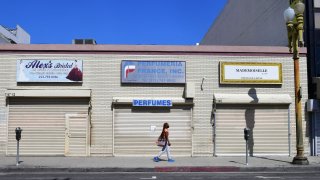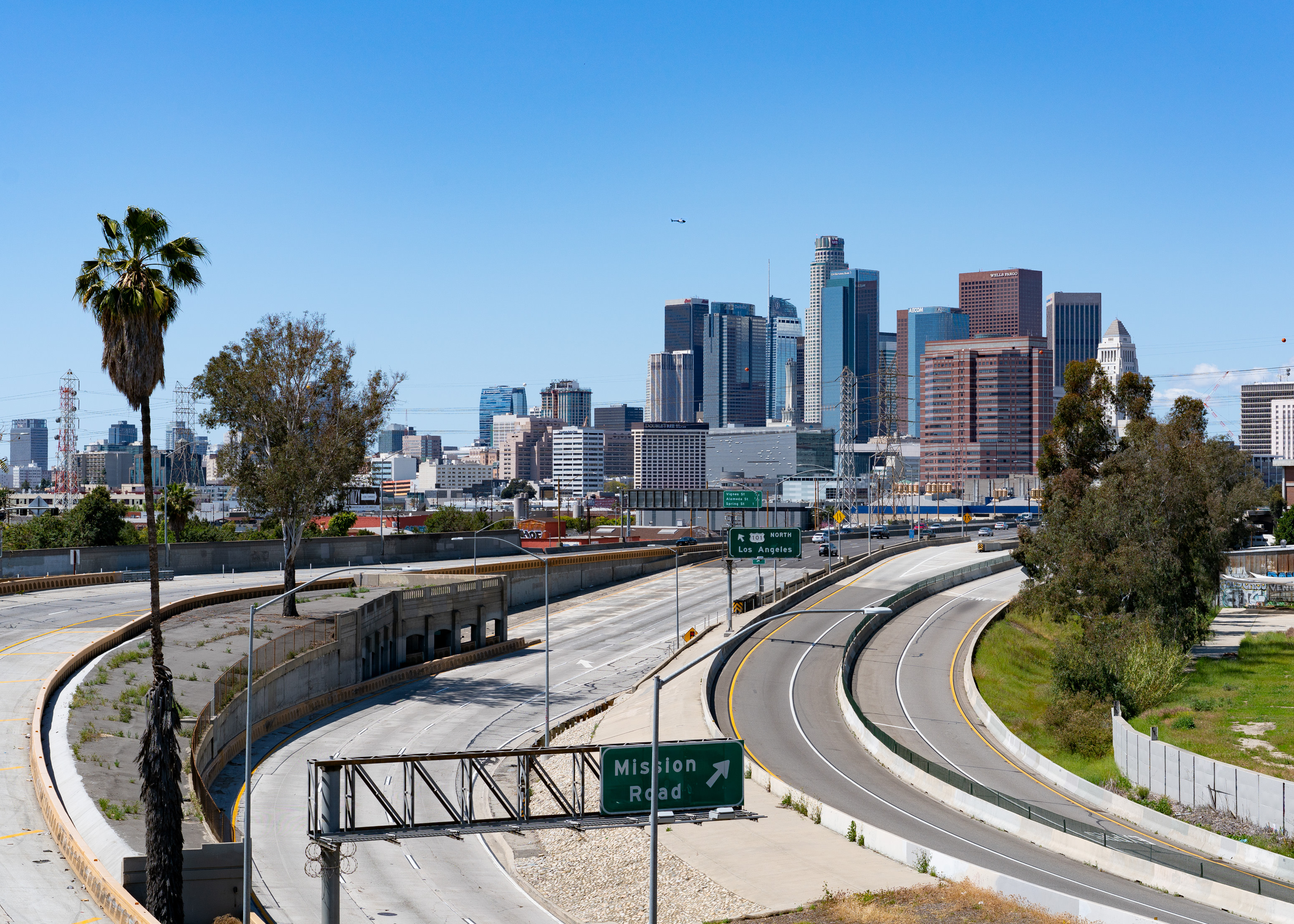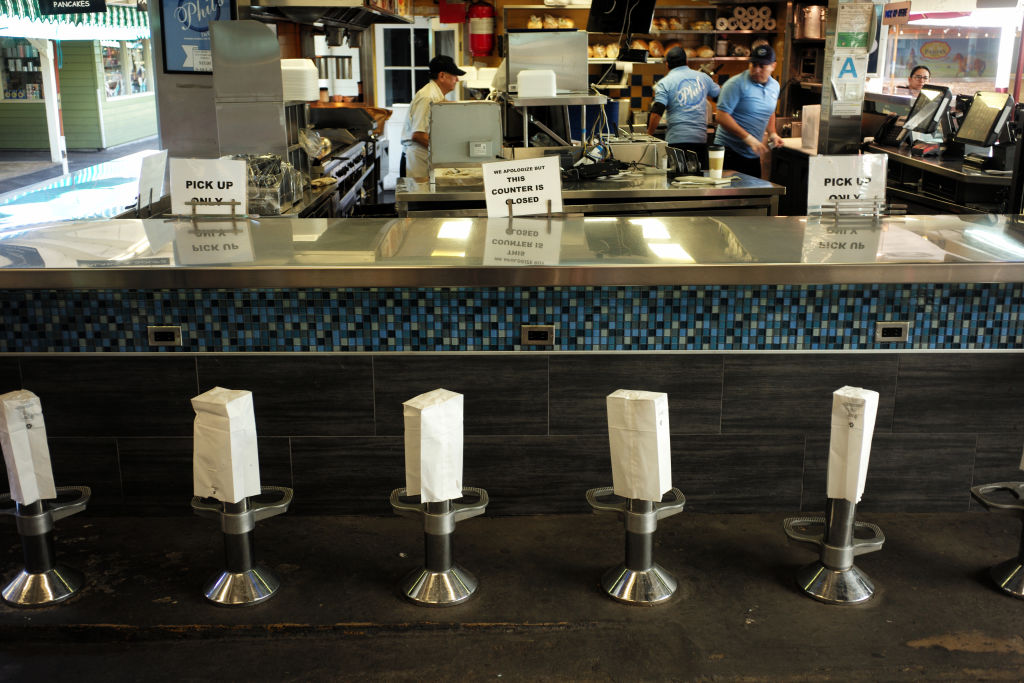
California businesses received highly anticipated new guidelines Thursday from Gov. Gavin Newsom's administration that outline the first widespread changes to a statewide stay-at-home order that shut most retail shops to slow the spread of the coronavirus.
Newsom is allowing some businesses, such as clothing stores, florists, bookstores and sporting goods shops to open their doors for the first time in nearly two months, with some restrictions. The governor has said the order detailed Thursday won't include other close-contact businesses, such as dine-in restaurants and hair salons.
White House Reopening Guidelines Leave Room for Interpretation
For states considering lifting quarantine measures, the official guidelines propose either a downward trajectory of COVID-19 cases within two weeks or a downward trajectory of positive tests as a percent of total tests.
As shown below, when you compare yesterday’s new case count with that of two weeks ago, the number is often lower, simply because the counts fluctuate. The criteria has been criticized by some for being vague, creating the opportunity for any governor to argue the numbers are favorable enough to start reopening.
Source: The COVID Tracking Project
Credit: Amy O’Kruk/NBC
However, he also has said some local governments could receive variances. If infection numbers increase in a way that stresses the health system, the modifications may be dialed back, Newsom said.
"It is a dynamic process. It is not etched in stone," said Newsom. "At the end of the day, these are meaningful modifications."
Since the stay-at-home order was issued on March 19, more than 4 million people have been thrown out of work in the nation's most populous state.
The guidelines are part of Newsom's four-step plan to reopen the state. The first phase involved making workplaces safe for essential workers. Stage 2, part of which was rolled out Thursday, allows for a gradual reopening of retail business, permitting curbside operations, manufacturing and logistics.
Retailers are encouraged to install and use hands-free payment devices and offer hand sanitizers.
"We’re moving away now from essential and non-essential to lower risk," Newsom said.
Businesses must meet the following guidelines:
- Perform a detailed risk assessment and implement a site-specific protection plan.
- Train employees on how to limit the spread of COVID-19, including how to screen themselves for symptoms and stay home if they have them.
- Implement individual control measures and screenings.
- Implement disinfecting protocols
- Implement physical distancing guidelines.
Dr. Mark Ghaly, the state’s Health and Human Services director, said data indicating stable conditions at hospitals gave authorities confidence to move into Stage 2. He said more businesses and sectors, such as shopping malls, restaurants offering seating, offices and outdoor museums, will be added later during the expansion of Stage 2.
The next phase, which could reopen salons, gyms, movie theaters and in-person church services, could be months away. Phase 4 would end all restrictions and allow for large gatherings at concerts and sporting events.
The Newsom administration is tracking six indicators to determine when to ease restrictions. They include the state's ability to test people for COVID-19 and trace who might have been exposed to it and the capacity of hospitals to handle a potential surge of new cases.
So far, Newsom has said the state is on track to meet its goals.
How Long Until Coronavirus Will Cause Peak Hospital Use Across the Country
This interactive chart uses model data provided by the Institute for Health Metrics and Evaluation to predict how the coronavirus will affect health care resources in different states. The maximum hospital bed use in some states, such as New York, has already passed while in others it is weeks away. Most states have enough general hospital and ICU beds to meet demand, according to additional data from The Associated Press.
Sources: State hospital bed capacity data from the Associated Press. Model data provided by IHME. Note: The model assumes full social distancing through May 2020.
Credit: Amy O’Kruk/NBC
Newsom's order had been universally accepted until recently.
Three Northern California counties with few confirmed COVID-19 cases have allowed a variety of businesses to reopen. Tiny Modoc County permitted its only movie theater to open its doors. Yuba and Sutter counties allowed in-store shopping and the restarting of gyms and fitness studios, salons, spas and tattoo parlors, libraries and playgrounds.
Yuba Sutter Mall General Manager Natasha Shelton said about 18 of the roughly 50 stores were open Wednesday and estimated about 200 people were inside at noon. The mall had reduced hours to allow for additional cleaning overnight. Tables in the food court were spaced 6 feet apart and food trays were banned.
Newsom has cracked down on rogue counties before, ordering the temporary closure of all beaches in Orange County after a few local governments refused to close them or impose public health restrictions. He lifted some of those orders after negotiating with local governments.
In Los Angeles, county officials outlined a plan allowing some reopenings beginning Friday, provided safety precautions are in place. Golfers can hit the links again, and trails will be open with county employees on hand to remind hikers of social distancing rules, Board of Supervisors Chair Kathryn Barger said.
Some Los Angeles County retailers can reopen with curbside pickup only -- including florists and stores that sell toys, books, clothing, sporting goods and music. The county, the state's largest with 10 million residents, has accounted for more than half California's more than 2,500 virus deaths.
Newsom's announcement comes on the same day the Newsom administration issued new projections that show California faces a stunning $54 billion budget deficit due to the coronavirus pandemic. The state was running a $21 billion surplus last year and projected a $6 billion surplus just three months ago.
For most people, the new coronavirus causes mild or moderate symptoms, such as fever and cough that clear up in two to three weeks. For some, especially older adults and people with existing health problems, it can cause more severe illness, including pneumonia and death.



